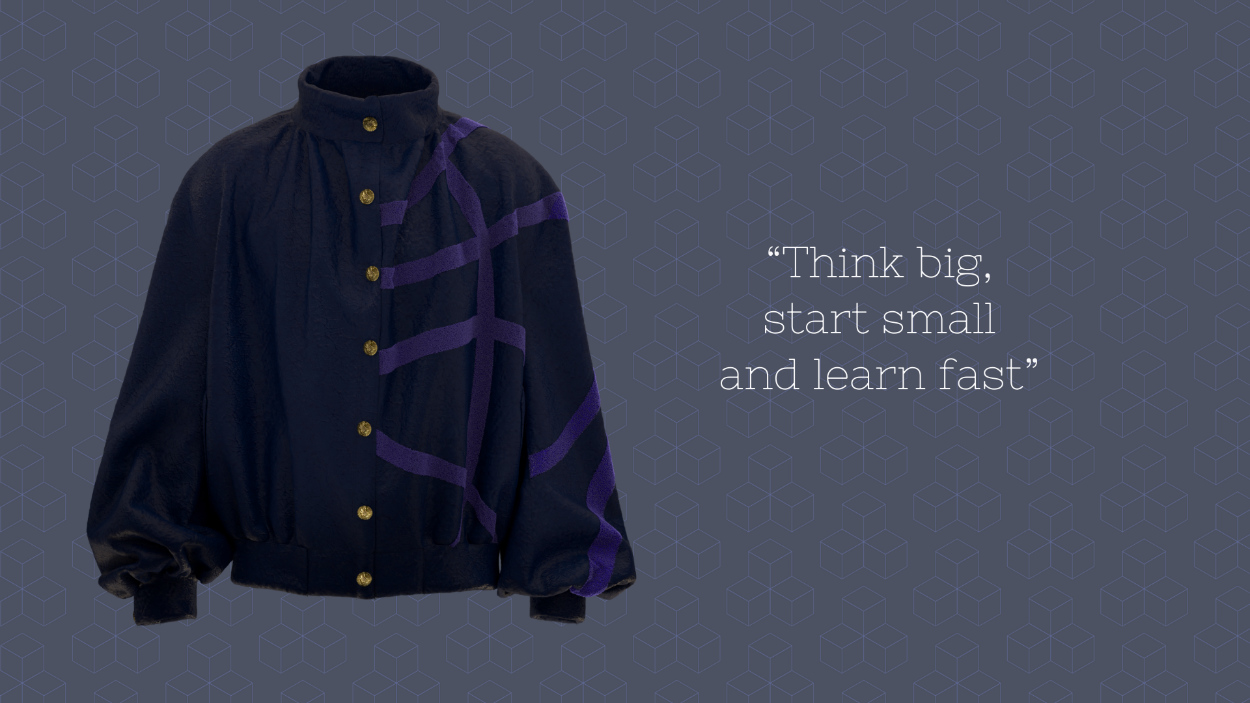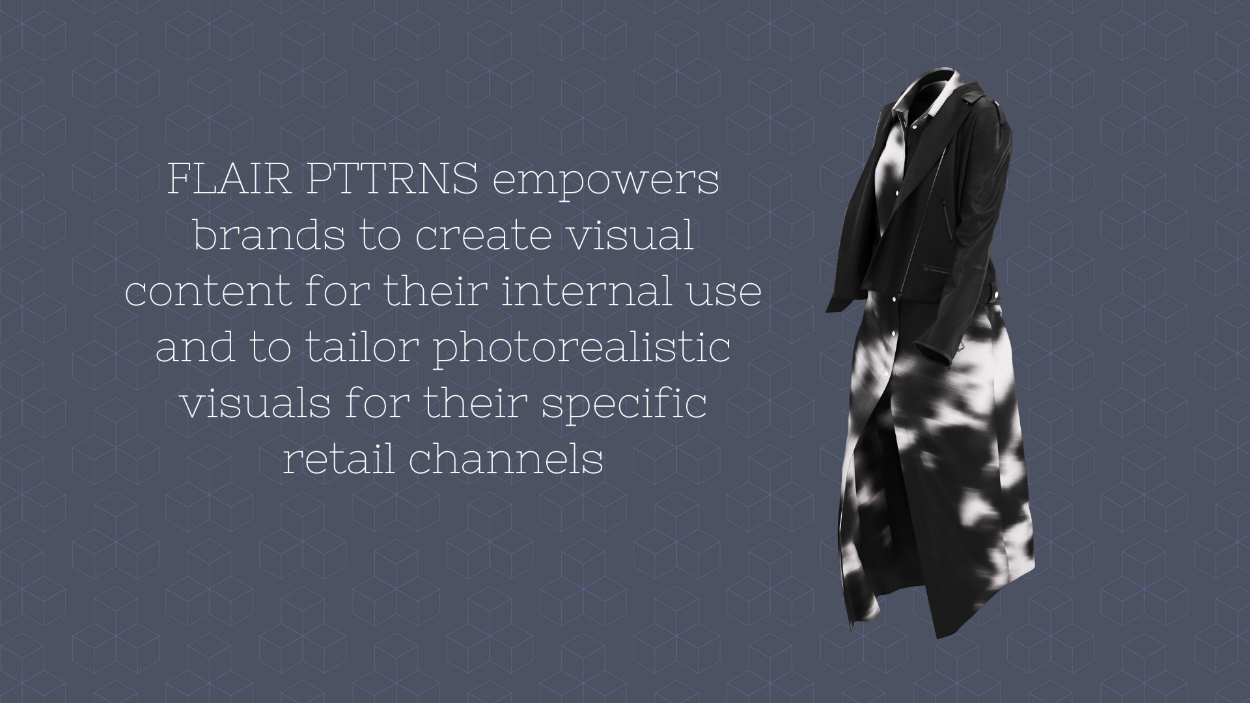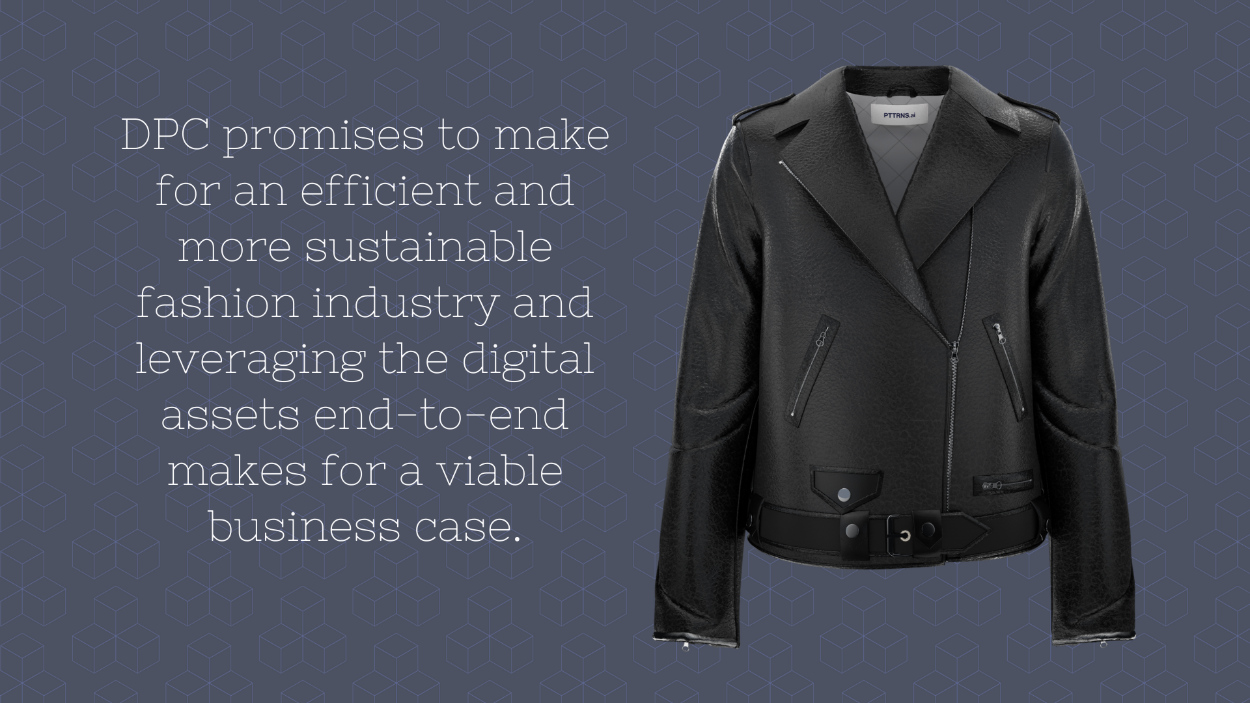Released in The Interline’s DPC Report 2023, this executive interview is one of a sixteen-part series that sees The Interline quiz executives from major DPC companies on the evolution of 3D and digital product creation tools and workflows, and ask their opinions on what the future holds for the the extended possibilities of digital assets.
For more on digital product creation in fashion, download the full DPC Report 2023 completely free of charge and ungated.
Key Takeaways:
- The potential of an accurate digital representation of a product extends far beyond design, and into merchandising, sustainability, and consumer-facing use cases. But this possibility space can be overwhelming, and ambition can easily outstrip progress. To make concrete progress, brands should focus on clear business cases and identify opportunities to scale through automation.
- With a growing demand for high-fidelity renders of digital assets, 3D and DPC teams are increasingly inheriting the responsibility for building visuals for sales and marketing purposes, instead of being able to concentrate on the critical creative, technical, and commercial elements of digital product creation. This makes automated rendering a prime target for both realising value from digital assets and removing process bottlenecks.
- Intelligent investment in DPC, and the progressive development of best practices and industry standards, will combine, over time, to create a more efficient and more sustainable fashion industry – with value realised from digital assets end-to-end.
What do you believe are the greatest opportunities that are realistically achievable, in 2024, through investment in DPC talent and tools?
For most of us, the promise of a more sustainable supply chain, reducing physical samples, cutting costs, being more efficient in collaboration and merchandising garments effectively before moving to production have been the reasons to get started with DPC. As most of us have found, it is not that easy; it requires effort and a substantial budget to make a DPC transformation where costs are often added rather than replaced. Consequently, when progress is behind on ambitions, next to tough times, DPC gets pressured.
For me, the ‘realistically achievable’ part is key for brands and suppliers to ask themselves, and from a consulting perspective, my answer here is ‘think big, start small and learn fast’. In practical terms: show that DPC saves time, eases ways of working, reduces time to market, and has an end-to-end (from design to e-commerce) purpose and business case. Focus on a single (simple) product category for which a business case is more than feasible considering cost and effort in non-digital ways of working before embracing (read: overwhelm oneself with) DPC at large. Additionally, think end-to-end in the sense that DPC is not just for the product development departments but that it holds value for the commercial side of the business, too. DPC renders are not just for design iterations and collection approval but can be used for consumer-facing purposes where renders replace product photography costs rather than adding them.
To make ‘realistically achievable’ feasible, lean on others; don’t reinvent the wheel. Delegate photorealistic rendering to automated pipelines like ours and seek companies like ours (and there are plenty) that use DPC’s best practices and help with scaling DPC in a viable manner.

With Digital Product Creation, brands are not just replacing or training designers and patterns makers to work with digital tools and new ways of working within or alongside day-to-day efforts, i.e. the digital transformation, but also bring in tasks that are traditionally not part of product development departments, like the creation of visuals for marketing departments.
Even though interesting on itself, learning about all the things that come with rendering at scale is not something I believe necessarily needs to take place in DPC teams. Rendering, specifically at scale for marketing quality purposes, entails pipelines, 3D software, render engines, cloud, colour-grading, photography, composition, posing, avatars, motion, camera lighting (HDRI), shading, post-production, etc. In other words, taking responsibility for visuals for marketing purposes brings an additional workload where DPC teams might need to focus on digital product creation itself instead.
Our fashion rendering platform, FLAIR PTTRNS, empowers brands to focus on digital product creation and hand over the ready CLO3D files to our automated pipeline to generate visuals for various marketing and in-sales purposes. The benefits of delegating this work are in truly leveraging DPC beyond collaboration, design efficiency and reducing time to market. By using our platform, brands have the advantages of rendering at scale (dozens of visuals in the cloud without using your own computer power), in a consistent manner matching brand visual guidelines, with photorealistic quality beyond what is possible in CLO3D, and directly replacing costs of traditional product photography.
Tell us about the AI portion of the work that PTTRNS does, and how you see digital product creation linking in to digital personalisation.
DPC is at the start of an exciting new future, in which artificial intelligence will play a big role. We have already put this into practice. Next to our cloud rendering pipeline, we also develop recommender algorithms for apparel (eyewear, footwear, and fashion) that help customers discover the products that best suit them so they can make confident and conscious choices when buying products. With this other digital personalisation solution, called STYLE PTTRNS, we specifically focus on understanding customer psychographic preferences and desires on an aesthetical and stylistic level and match the right products to help brands and retailers connect with customers directly, increase conversions four-fold, increase customer-life-time-value by giving good advice and reduce returns.
For our fashion rendering platform, FLAIR PTTRNS, we aim for high quality and believe that staying true to the actual garment design, fit, and draping is crucial. Artificial intelligence, especially generative AI, is well-equipped to ‘imagine’ things, finding patterns in what computer vision perceives and filling in gaps. However, the state-of-the-art algorithms won’t suffice for now when generating photorealistic images that capture products as intended. AI might do quite okay for plain shirts, but it will already get tricky when it comes to imagining buttons that are not in the design, let alone specific prints. Therefore, we use little AI in our visualisation pipeline for DPC and chose to rely on the accuracy of rendering for the time being.

That said, technology develops rapidly, so we keep an eye out and will see what the future brings. To speculate, it is not a far stretch from using high-quality renders and interactive experiences with 3DPC assets in STYLE PTTRNS fashion personalisation when you imagine the possibilities of staging digital garments against personalised backgrounds and on avatars that customers can identify themselves with.
As we’ve seen elsewhere in this report, there has recently been an explosion of downstream uses cases for digital assets – spanning sales, marketing, eCommerce and more. And that’s creating a significant gap between the demand that brands and retailers have for digital products, and their ability to meet that demand. How do you see your easy-to-use rendering platform bridging that gap?
I recognise this demand from brands for using digital assets in various use cases. As such, we have developed our flexible automated rendering pipeline to provide diverse visual output. We offer various digital asset formats ranging from lower resolution images for the design process to mid-quality for internal product approval meetings, up to high-quality pack shots, and 360 clips for B2B and B2C sales. Additionally, FLAIR PTTRNS goes beyond conventional visual outputs by providing photorealistic editorial visuals, complete with human-like avatars and elaborate (or studio) backgrounds. We aim to help brands leverage the already ready 3DPC styles developed in CLO3D to replace commercial and editorial product photography without additional effort from DPC teams.
What excites me is that our platform can take in a single 3DPC CLO3D file with multiple colourways and produce all the visual formats mentioned before. The brand-specific templates warrant consistent output fitted for each use case. Our standards of automatically handling 3DPC files further offer the opportunity for brands not just to produce visual output for themselves – aligned with their visual brand identity in terms of camera angle, background, and lighting – but also those for specific retail or marketplace channels that have their own requirements for visual standards to achieve uniformity.
Essentially, FLAIR PTTRNS empowers brands to create visual content for their internal use and to tailor photorealistic visuals for their specific retail channels, thereby expanding its utility and scalability.
What do you believe are the processes and links in the current DPC workflow that will benefit the most from automation? And how will that automation help brands to deliver on their visions for speed and scale?
It would be obvious to state that rendering within the DPC workflow would benefit most from automation since brands seek consistent, high-quality output at scale. Even though I will not deny that – given that our platform fills exactly that gap – I also believe it is key to link up the various tools and workflows within the DPC landscape.
I recognise a need for aligning technical standards and reducing overhead in the DPC workflow. For instance, aligning on technical aspects of colour-grading standards or file naming conventions makes sense throughout the journey of a 3DPC file. I also see a lot of manual work being put into creating and maintaining overviews to manage files do simple handovers between tooling. Is the CLO3D file signed off? Is the bill of material complete in the PLM? Are the correct renders being made in FLAIR PTTRNS? Are the renders ready for e-commerce and available in the DAM? In short, it is easy to lose track while the process is also quite repetitive, thus very fit for automation.
Our approach to aligning technical standards and smoothing out the tedious manual labour of keeping track of what is happening between tools is to offer API access. We offer brands – next to access to the rendering platform itself – the opportunity to connect their PLM and other systems to our rendering platform, automatically upload their files, and kick off the renders for the different colourways with a template that delivers visuals with the correct resolution, margins and background. Additionally, FLAIR PTTRNS has an API for the ready visuals to be sent directly to image approval tools like Creative Force or digital asset management systems for e-commerce distribution.

How would you describe the ideal 3D / DPC pipeline – category-specific or generalised – and what barriers are currently preventing it from being built and widely adopted? What pieces still need to be put in place for fashion to stand the best chance of achieving what you define as the full-scale vision for DPC?
We are still quite far from what would be ideal. As a DPC community, I think we are at the forefront, pioneering. We are still exploring what ideal means and will most likely discover that ideal will be different for each brand given its product categories, suppliers, digital maturity, resources, software landscape and so on. As such, I can merely speculate about future barriers, but they are likely in the realm of lacking technology compatibility standards in ways of working and finding and training skilled people. I can, then, invite vendors to (continue to) take an open approach when it comes to collaborating and tech compatibility, offering APIs, matching file format standards and perhaps working towards a more industry-standard way of working despite the different features of the various DPC tools.
To sober things up before sharing my glimpse of hope. Digital product creation – as a set of tools, mindset, and a way of doing fashion digitally – is young, novel, exciting and bound to be a bumpy ride for the years to come. Transforming comes with investment, effort, risk, failure, and tons of learning before arriving at more efficient teams, reduced time to market, sample reduction and development-on-demand.
That said, DPC does promise to make for an efficient and more sustainable fashion industry and leveraging the digital assets end-to-end (from design to ready visuals for e-commerce replacing (not adding) costs) makes for a viable business case. As you can understand, we are happy to help brands find scale in this transformation process and support with automated rendering.
